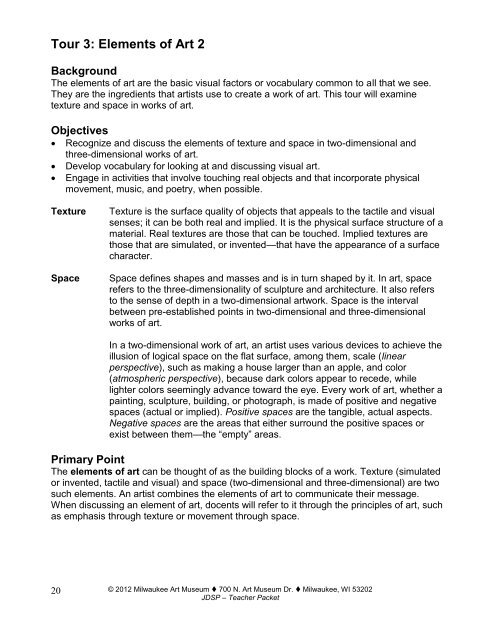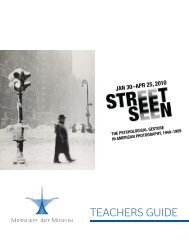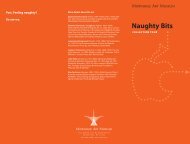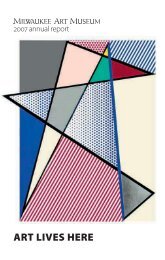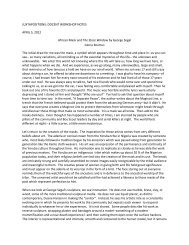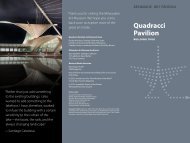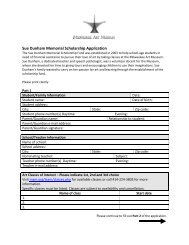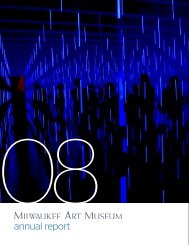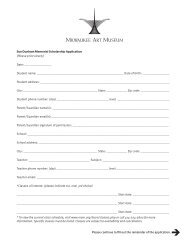2012-2013 JDSP Teacher Resource Packet - Milwaukee Art Museum
2012-2013 JDSP Teacher Resource Packet - Milwaukee Art Museum
2012-2013 JDSP Teacher Resource Packet - Milwaukee Art Museum
Create successful ePaper yourself
Turn your PDF publications into a flip-book with our unique Google optimized e-Paper software.
Tour 3: Elements of <strong>Art</strong> 2<br />
Background<br />
The elements of art are the basic visual factors or vocabulary common to all that we see.<br />
They are the ingredients that artists use to create a work of art. This tour will examine<br />
texture and space in works of art.<br />
Objectives<br />
<br />
<br />
<br />
Recognize and discuss the elements of texture and space in two-dimensional and<br />
three-dimensional works of art.<br />
Develop vocabulary for looking at and discussing visual art.<br />
Engage in activities that involve touching real objects and that incorporate physical<br />
movement, music, and poetry, when possible.<br />
Texture<br />
Space<br />
Texture is the surface quality of objects that appeals to the tactile and visual<br />
senses; it can be both real and implied. It is the physical surface structure of a<br />
material. Real textures are those that can be touched. Implied textures are<br />
those that are simulated, or invented—that have the appearance of a surface<br />
character.<br />
Space defines shapes and masses and is in turn shaped by it. In art, space<br />
refers to the three-dimensionality of sculpture and architecture. It also refers<br />
to the sense of depth in a two-dimensional artwork. Space is the interval<br />
between pre-established points in two-dimensional and three-dimensional<br />
works of art.<br />
In a two-dimensional work of art, an artist uses various devices to achieve the<br />
illusion of logical space on the flat surface, among them, scale (linear<br />
perspective), such as making a house larger than an apple, and color<br />
(atmospheric perspective), because dark colors appear to recede, while<br />
lighter colors seemingly advance toward the eye. Every work of art, whether a<br />
painting, sculpture, building, or photograph, is made of positive and negative<br />
spaces (actual or implied). Positive spaces are the tangible, actual aspects.<br />
Negative spaces are the areas that either surround the positive spaces or<br />
exist between them—the “empty” areas.<br />
Primary Point<br />
The elements of art can be thought of as the building blocks of a work. Texture (simulated<br />
or invented, tactile and visual) and space (two-dimensional and three-dimensional) are two<br />
such elements. An artist combines the elements of art to communicate their message.<br />
When discussing an element of art, docents will refer to it through the principles of art, such<br />
as emphasis through texture or movement through space.<br />
20<br />
© <strong>2012</strong> <strong>Milwaukee</strong> <strong>Art</strong> <strong>Museum</strong> 700 N. <strong>Art</strong> <strong>Museum</strong> Dr. <strong>Milwaukee</strong>, WI 53202<br />
<strong>JDSP</strong> – <strong>Teacher</strong> <strong>Packet</strong>


